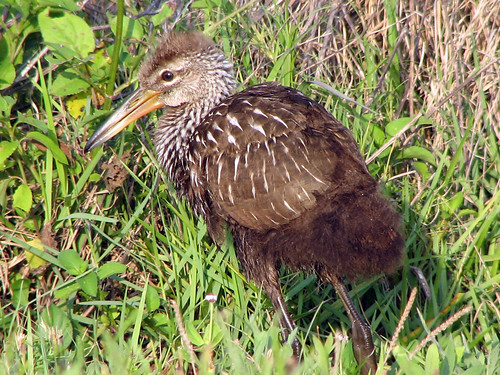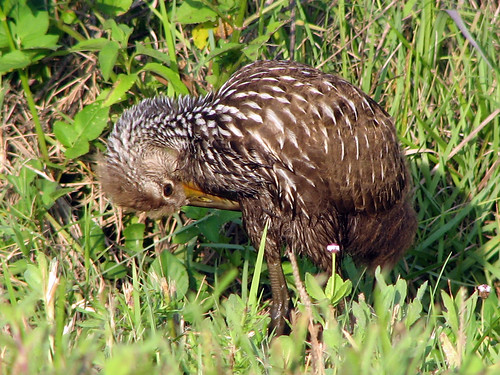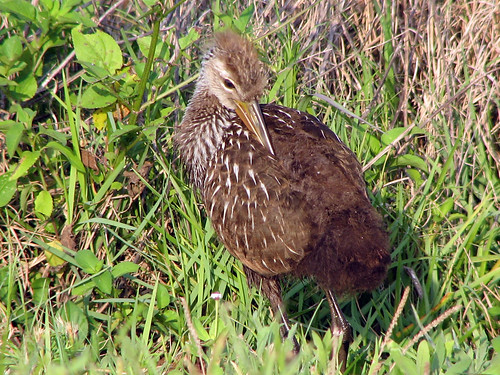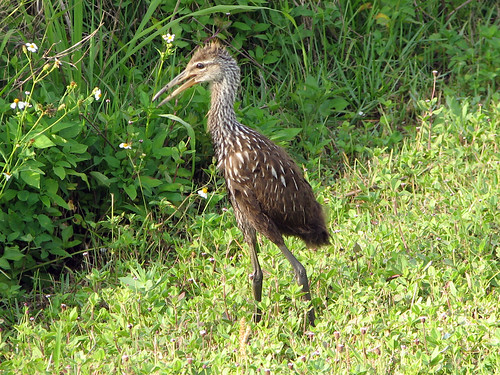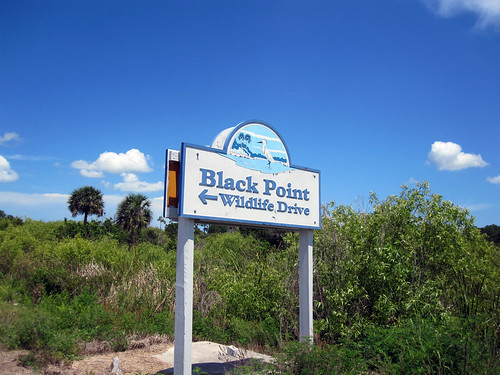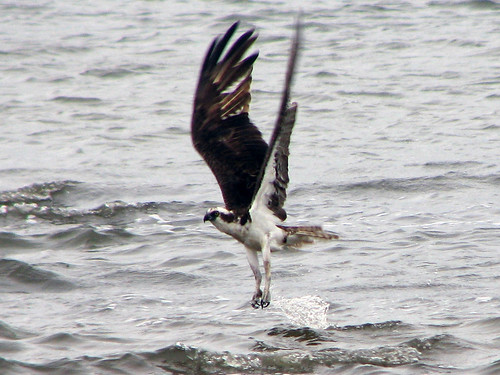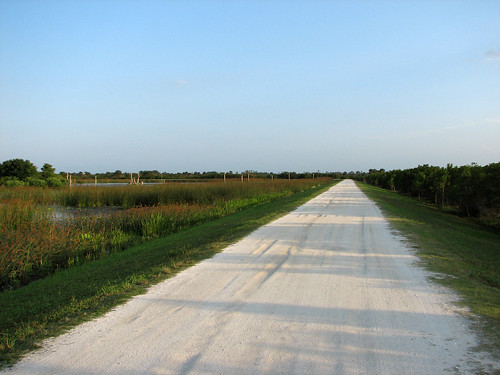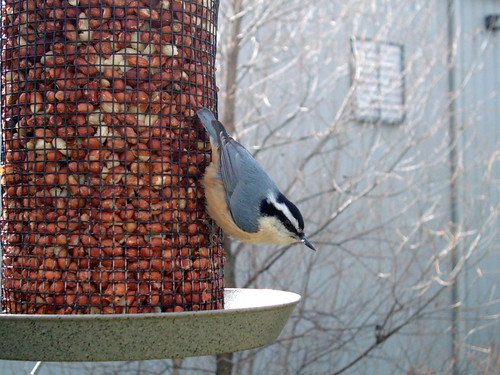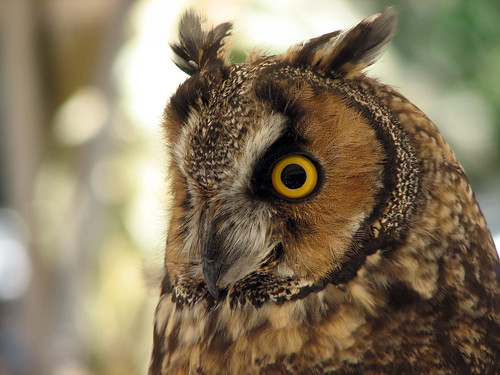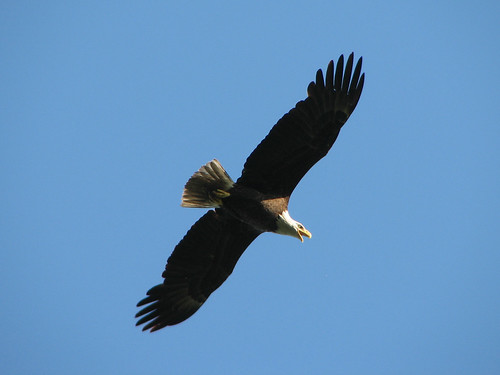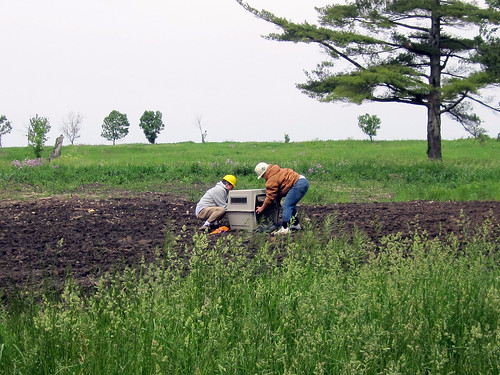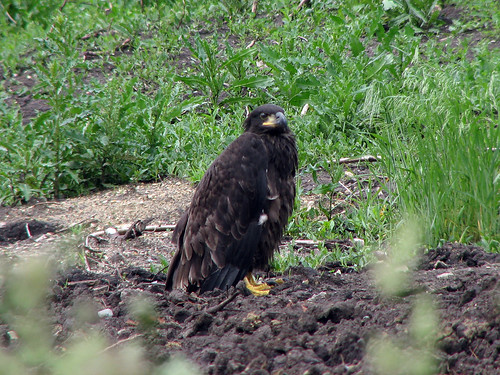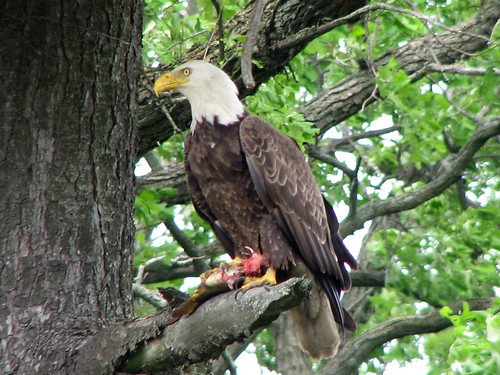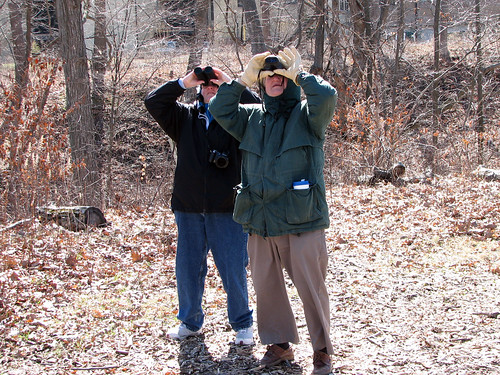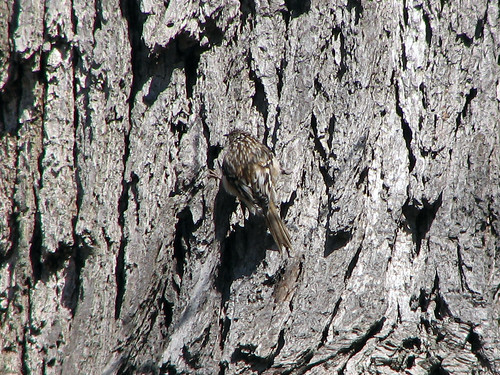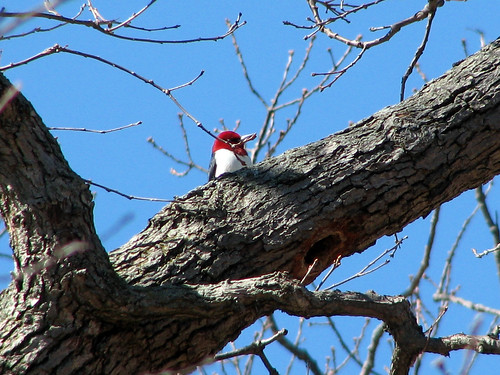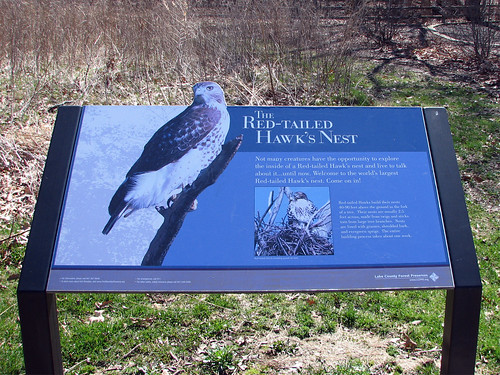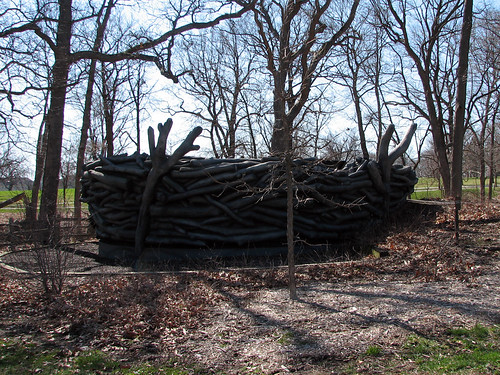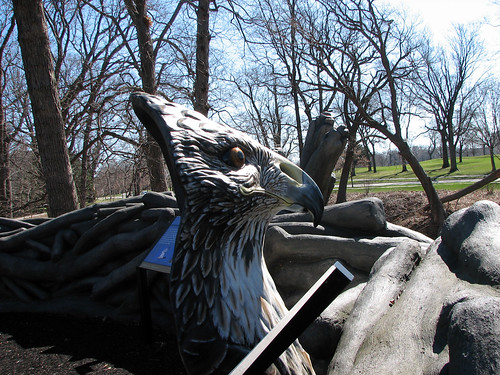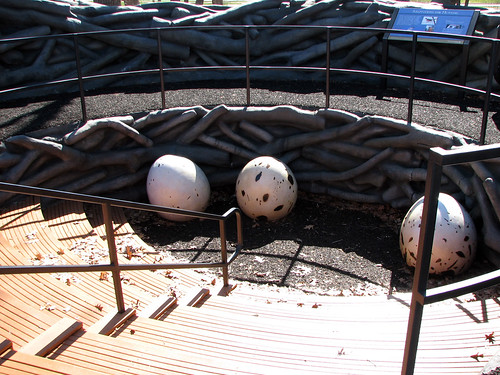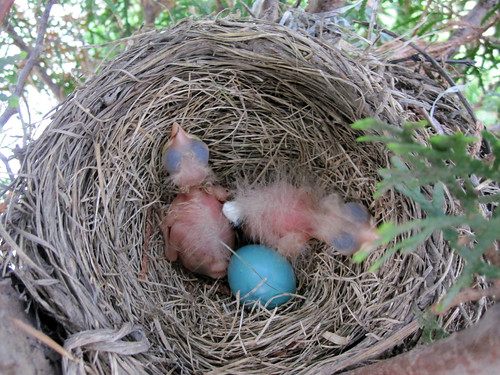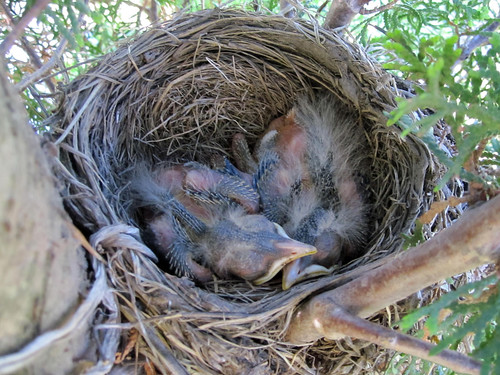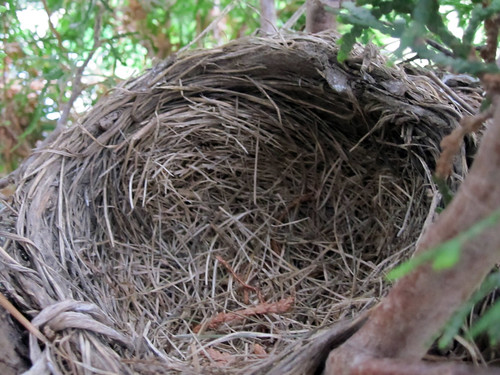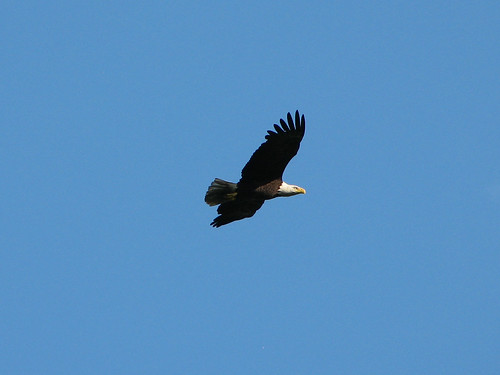
An adult Bald Eagle soars over Mooseheart, Illinois
On Tuesday, May 31st, Arthur and I had the most amazing adventure, thanks to Flint Creek Wildlife Rehabilitation and a family of Bald Eagles in need. Read the first part of this story here: Mooseheart eaglet rescue part 1
While Kim, Arthur and I were eaglet-sitting, Dawn and others from FCWR were busy gathering tools and material for a man-made Bald Eagle nest, and arranging for a basket crane in order to reach the height of an eagle’s nest.
Representatives from The Care Of Trees came out to assess the site and determined that they would be able to access the stand of trees where the eagles had nested. Dawn arrived with the second eaglet and nest-making materials early in the afternoon. The Care Of Trees was also on site and ready to begin. First, Dawn retrieved the eaglet we had been watching all morning.

Dawn retrieves the eaglet before nest-replacement began
While Brian and Kathy from The Care Of Trees worked to position the crane and ready the tree for the new nest, volunteers worked on creating a large basket-style nest out of hardware cloth and stainless steel conduit.
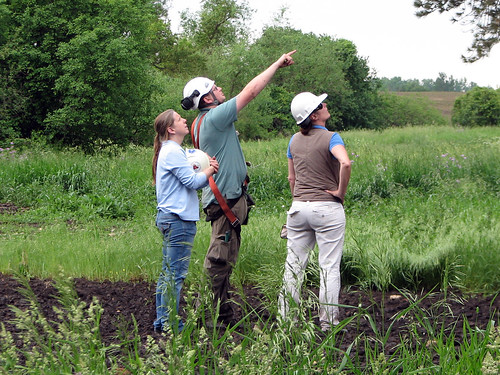
Dawn, Brian and Kathy assess potential nest locations
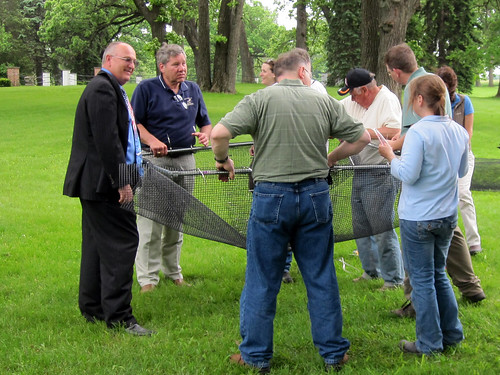
Volunteers assembling the new eagle nest
The completed nest was placed about 60 feet above the ground, which represented the practical limit of the crane. The original nest was thought to sit over 80 feet off the ground.
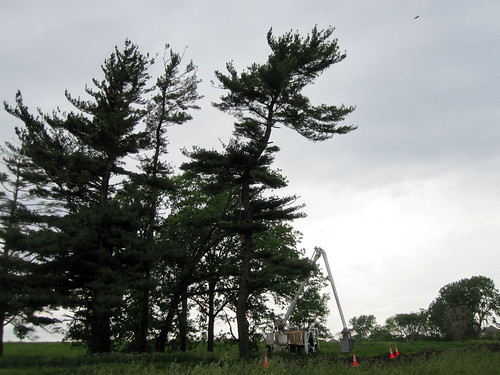
An overview of the nest site with an adult eagle soaring overhead
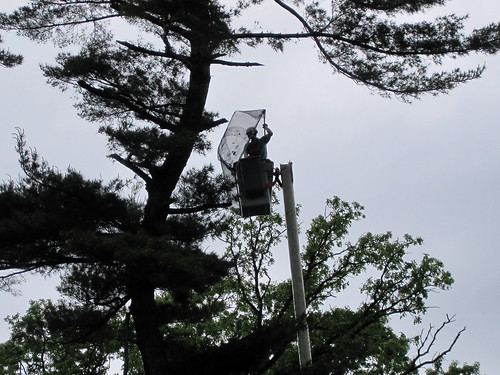
Brian from The Care of Trees brings the nest frame up
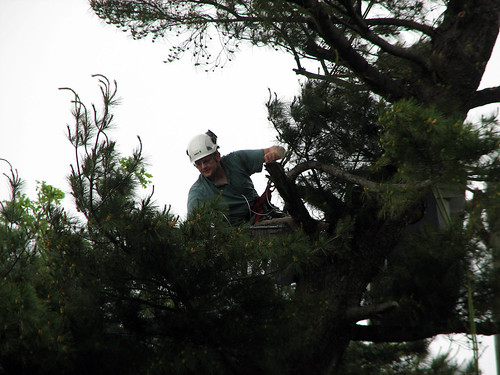
Brian from The Care of Trees secures the nest to the tree
With the basis for the nest in place, volunteers gathered material from the original nest and hoisted it up to the top of the crane. There, Brian arranged the material around the nest basket. It was hot, dirty and time-consuming work.
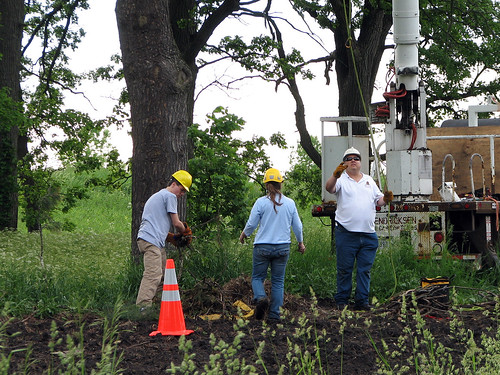
Gathering material from the original nest

Hoisting material up to the new nest
The nest, made of pine branches and other material, smelled wonderful! While gathering up the sticks and soft lining material, we came across the remains of some prey items. There were feathers in the nest, some of which may have been from prey species. One neat thing we found was a turtle shell. We also found a heron leg and some large fish bones.
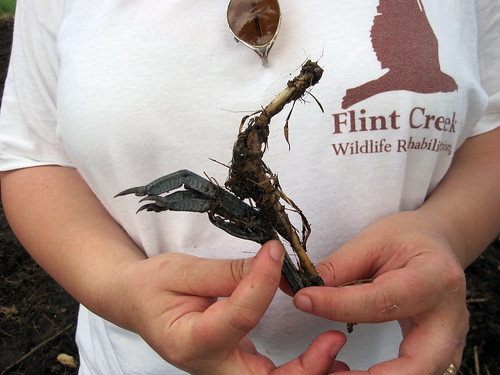
Heron leg found among the old nest material
All the while, photographers and reporters from several press outfits were on site to document the work. There are some links to their stories and photos at the end of this post. Representatives from Mooseheart and a small group of concerned Bald Eagle fans were also in attendance for much of the day. At one point, a news helicopter was even circling overhead!
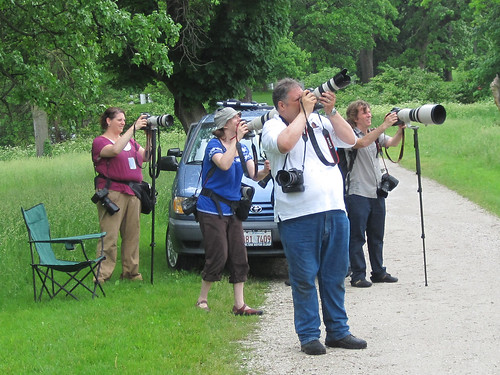
Eagle paparazzi
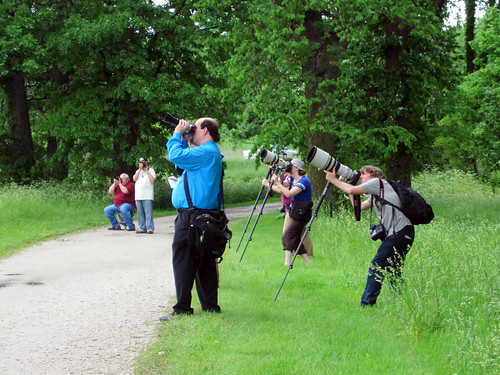
More eagle paparazzi
At about 6pm the nest was filled with as much material as we could gather and hoist up. Dawn went up in the crane to check the nest before returning to place the two eaglets into the nest.
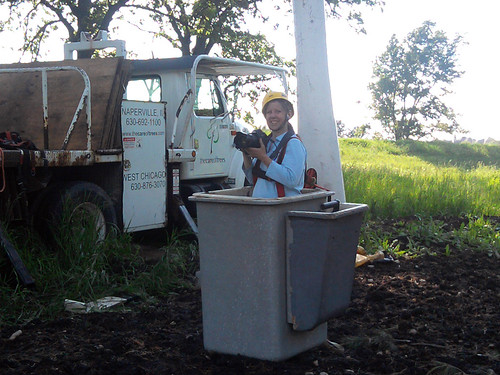
Getting ready to assess the nest
And then it was time to place the eaglets in their new home!

Transporting an eaglet to the crane
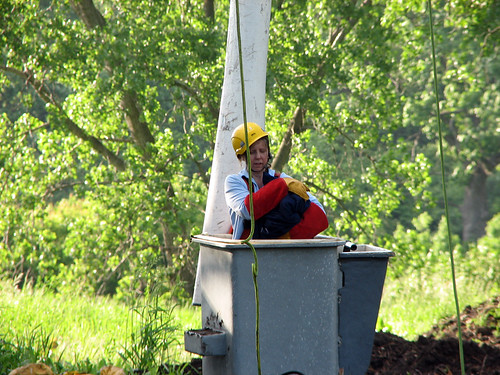
Bringing up baby
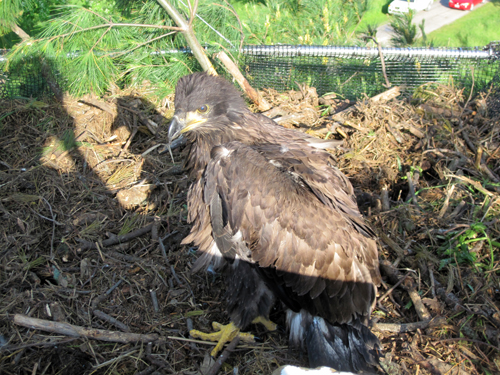
Eaglet in the new nest; photo by Dawn Keller
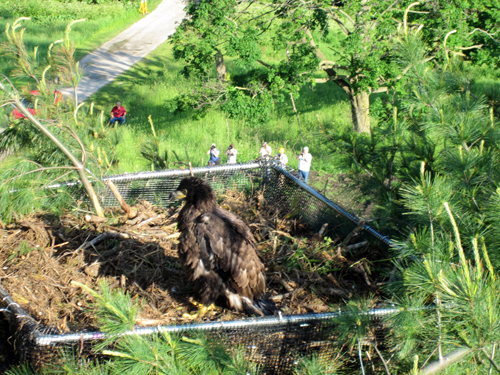
Eaglet in the new nest; photo by Dawn Keller
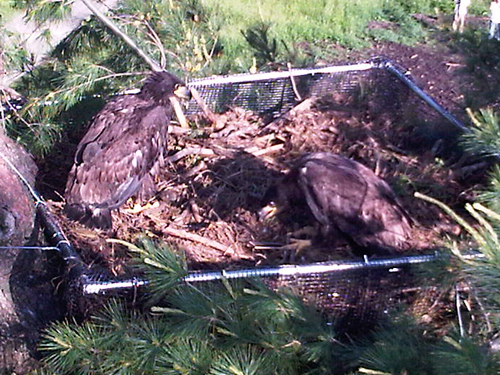
Two eaglets in the new nest; photo by Dawn Keller
As the parent eagles had been seen in the area all afternoon, we all had high hopes for the parents accepting the new nest and resuming their parental duties. Once the eaglets were in place, most of the press people left, along with Mooseheart representatives, local eagle fans, and other observers. Five of us from FCWR remained to watch the activity by the nest from a removed location for a little while.
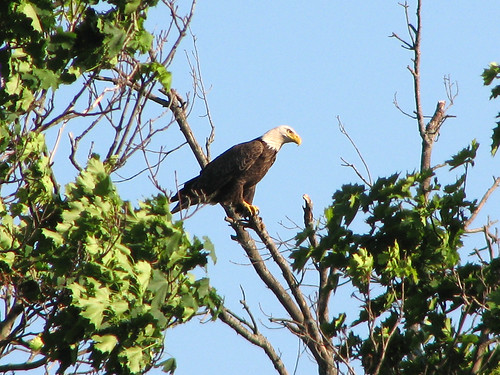
An adult Bald Eagle perches close to its newly-relocated babies
The parents were seen circling the nest tree, and the adults and eaglets vocalized back and forth several times. As we left, adult eagles were perched in branches very close to the nest. The next step was to observe the nest in the coming days to confirm the success of the mission.
It was an extremely long, exhausting and rewarding day. The story of the Mooseheart eaglets doesn’t end here, though. Stay tuned for more to this story!
Flint Creek Wildlife Rehabilitation is a non-profit, federally licensed rehab organization with locations in Chicago and Barrington, Illinois. You can follow their blog here, follow them on Facebook here, and make donations online here. This post reflects my own experiences as a volunteer with FCWR. Any errors are purely my own, and opinions here do not necessarily reflect those of FCWR.
Rush Is On To Save Bald Eagle Nest, Eaglets (CBS Chicago)
Storm topples Mooseheart eagles’ nest (The Beacon-News)
Eaglets Get Their New Home (CBS Chicago)
Eagles’ new nest (Kane County Chronicle)
Baby eagles rescued (Chicago Tribune photo gallery)
Volunteers save baby eagles (Chicago Tribune video)
Fallen eaglets saved, get new home (Daily Herald)
on wings of eagles (Chicago Tribune photographer Scott Strazzante’s blog)
Eagles’ nest gets encouraging news (Kane County Chronicle)
Share the birds, share the love!


